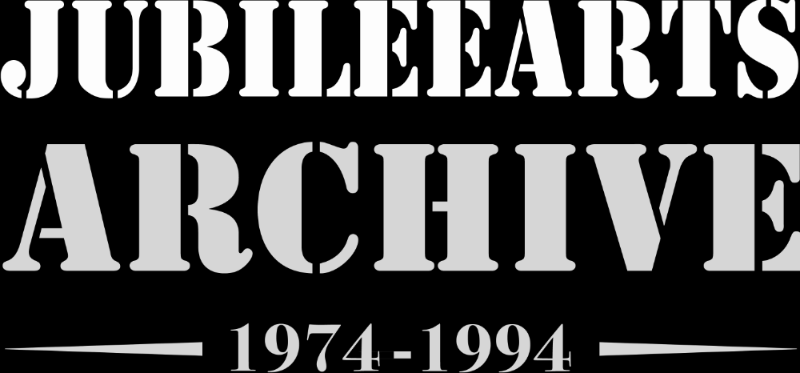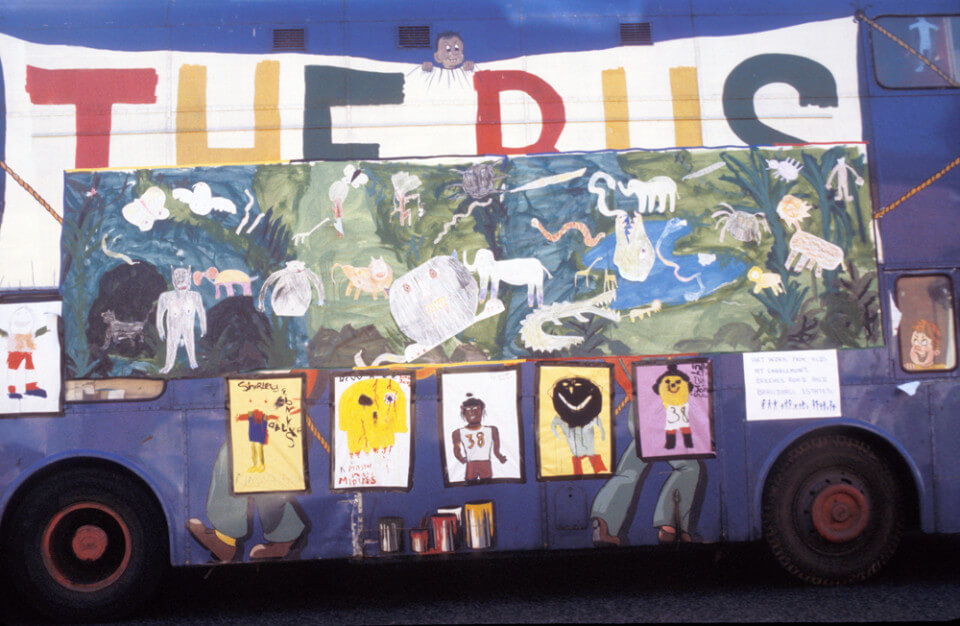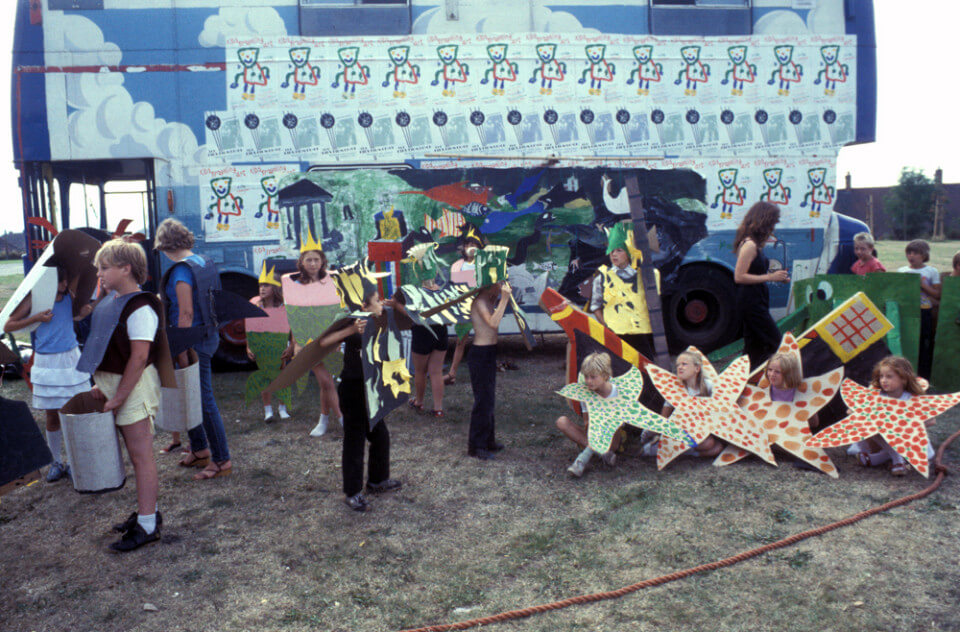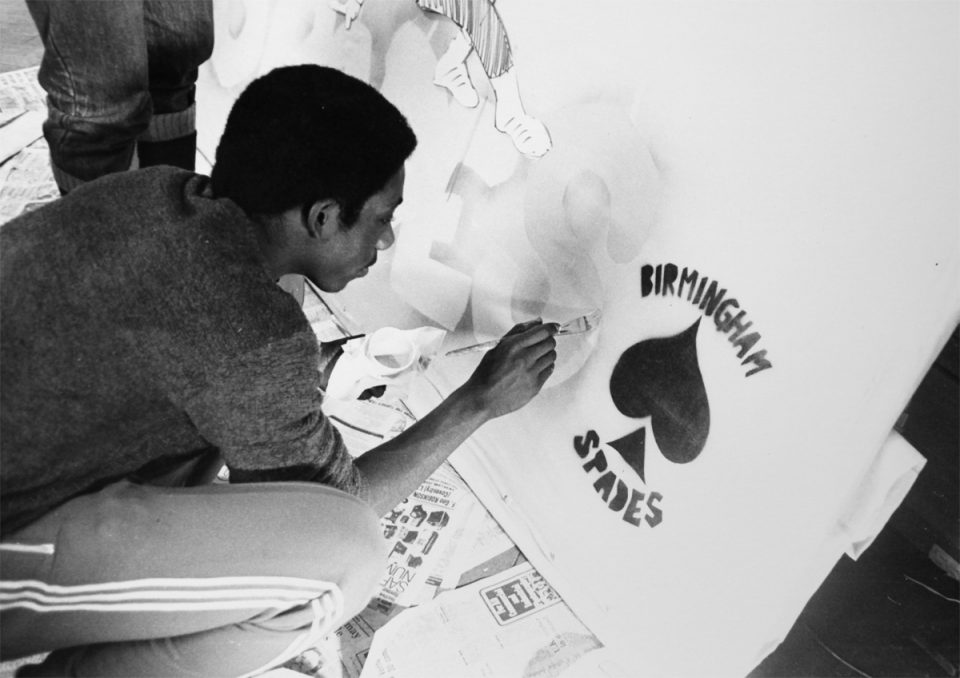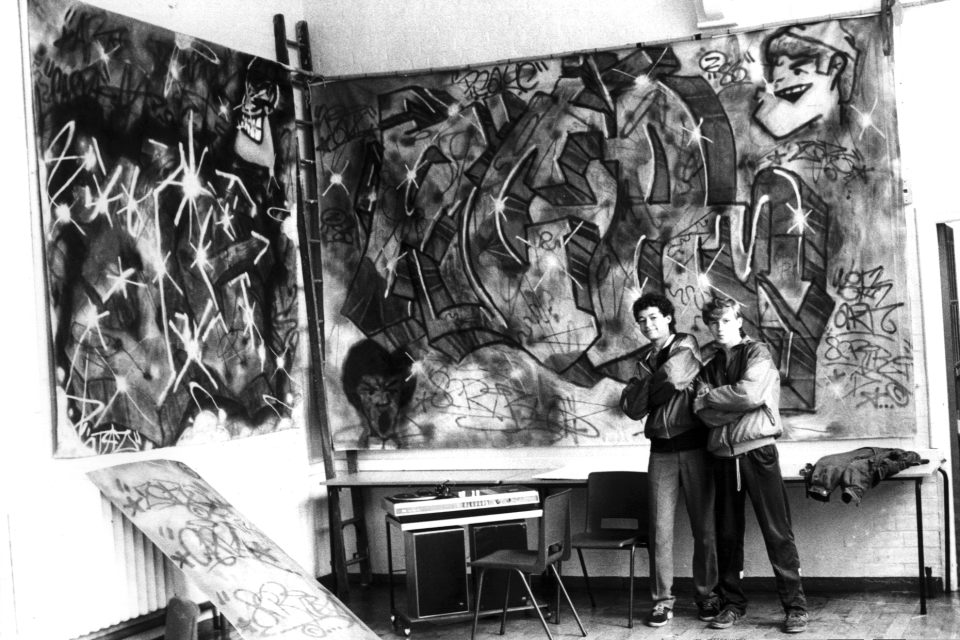In the mid-1980s, Jubilee Arts signed ‘agency agreements’ with both Dudley and Walsall Councils, aiming to expand youth arts work further across the Black Country boroughs and helping to develop new community artists and funding. These were to be for a period of three years.
At Noose Lane, in Willenhall, they undertook workshops with a community steering group to explore options. This led to a unique and successful funding application in the form of a video ‘tape-slide’. Over the summer of 1986, a series of arts workshops were held, culminating in a festival event at the local school. One project involved a group of teenage girls – and one lad, who enjoyed climbing on things to get in the shot – and made a short video called ‘Am Yow Tapin’ It?’ They canvassed local opinions on Girl Power, 10 years before the Spice Girls monetarised the term, focusing comments on Family Life, Best Friends, Spare Time, Education, Best holidays! And so on… This video was premiered at the Festival.
School workshops were also led by artists David Patten and Alan Vaughan, working with primary school children to create sculptures from refuse, exploring environmental and recycling issues, and a series large cut-out drawings with older youth outside of school hours. Patten had worked with the Ikon Gallery’s artists in schools programme and with Art Link, a West Midlands group who focused on work with people with disabilities.
Local teenagers were also involved in graffiti sessions, and oral history interviews with an over 50’s group. David Patten recalls: “At the time, I was doing a lot of self-portrait work with various groups, included disabled groups through Art Link regionally and – in Poland and Mexico – through Interlink. The work was very much about how self-portraiture and participation go hand in hand. Without thinking through how we see ourselves and how we are seen by others, participation in arts activities can end up being just unnecessary self-indulgent time-filling busy-ness! Noose Lane was memorable, of course, because of all the football we played, as well as the huge number of spray paint cans we got through. It became, though, increasingly about the challenge of making life-size self-portraits with Black and White youth at a time of considerable social unrest. This began to find better shape in questions about self-representation and cultural democracy within Jubilee, and the impact these have on meaningful community arts and place-building art projects.”
This willingness to engage in collaborations with artists from without the organisation itself offered fresh perspectives, questioning the context of art (placing it outside the gallery and in a social space), embracing an openness that consistently pushed and challenged the boundaries of their practice, often going against ‘received knowledge’, experimenting with new approaches and forms.
Notably the agency work in Walsall led to the creation of a Community Arts Team within Leisure Services in 1989, which delivered projects in partnership with local groups for the next 20 years. One of the founder members of that time, Debra Slade, later categorised their work in the following way, words which members of Jubilee Arts would no doubt endorse:
“Our role is to be a catalyst in finding the opportunities where the arts and creativity can have a role in making positive change. We identify partners, funders, art workers and participants to make a project happen, and project manage to ensure that the project keeps to track; that it has the desired outcomes; maximises the potential for the project and celebrates the process and the product. All projects are unique. No art forms are promoted as such, art forms are identified to suit the needs of a project or from proposals submitted for projects. As Walsall Community Arts Team we always had to qualify our particular definition of Community Arts, which was ‘using participatory arts and creative processes as a tool for change’. This interpretation of community arts was developed in the early days of the team over 15 years ago. Then the work was neighbourhood based – over the years the work has taken us to very different territories and we have asked ourselves over and over again: are we still being true to our team’s original values and how do we explain what we do? In the early days of the development of community arts as a movement, activism and experimentation was at the core. It involved community plays, community printing projects, banner making and local festivals. For local communities this work went some way towards promoting pride and cohesion: it was local led and a voice for local people. It gave a creative outlet for the activism of the time and firmly established the foundation that everyone has a right to, and can, dance/draw/act/write/play and promote the power of the collective expression.”
